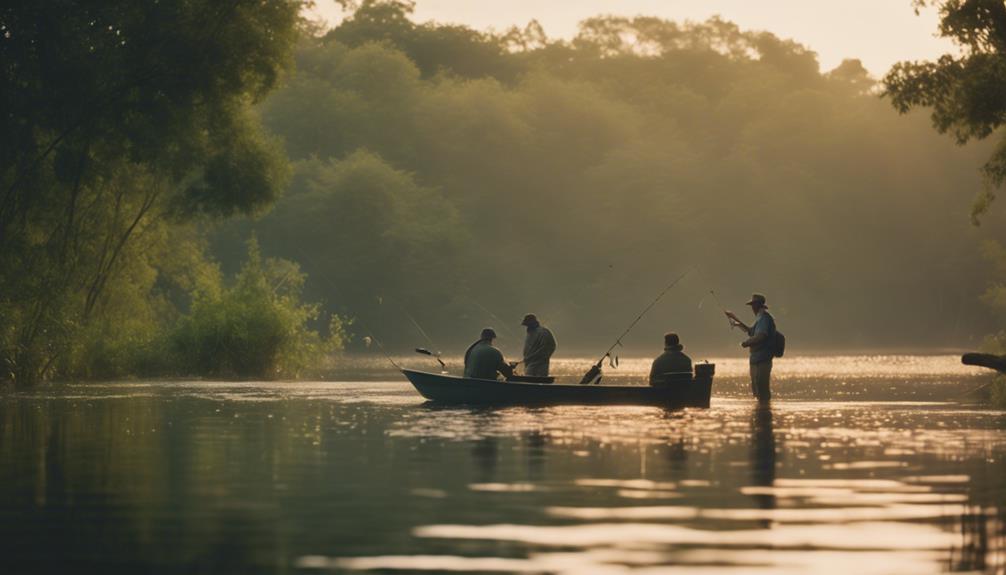Fishing is not just a hobby; it’s a way to connect with nature and enjoy some peaceful time outdoors. Whether you are looking to catch your dinner or just want to spend a relaxing day by the water, knowing how to catch fish is essential. In this guide, we will explore various techniques, tips, and tricks to help you become a successful angler.
Understanding Fish Behavior: The Key to Success
Before diving into the specifics of how to catch fish, it’s crucial to understand fish behavior. Fish are cold-blooded creatures, meaning their activity levels are influenced by water temperature. Warmer waters typically stimulate more feeding, so fishing during the early morning or late evening can yield better results. Additionally, knowing the seasonal patterns of your target species can significantly improve your chances. For example, many fish are more abundant during spawning seasons. If you understand when and where fish are most likely to be active, you can plan your fishing trips more effectively.
Choosing the Right Equipment for Successful Fishing
Selecting the right fishing gear is vital when learning how to catch fish. Your equipment includes the fishing rod, reel, line, hooks, and bait. For beginners, a medium-action rod paired with an open-faced reel is often recommended. This combination is versatile enough for various fishing conditions and species. When it comes to fishing line, a 10- to 15-pound test line is suitable for most situations. Don’t forget about hooks—size and style matter. A good rule of thumb is to match the hook size with the bait you are using. Finally, the type of bait can vary based on the fish species; live bait, such as worms or minnows, is often more effective than artificial lures for beginners.
Finding the Best Fishing Spots: Where to Cast Your Line
Knowing where to fish can be just as important as knowing how to catch fish. Look for areas where fish are likely to congregate, such as near structures like rocks, fallen trees, or underwater vegetation. If you’re fishing in a lake, shallow areas with weeds or lily pads can be hotspots, especially during the warmer months. For river fishing, focus on eddies, pools, and current breaks. Local fishing regulations may also dictate specific areas, so it’s wise to familiarize yourself with these rules before heading out. Additionally, local fishing forums, websites, and social media groups can provide insights into the best spots.
The Art of Casting: Techniques for Precision and Distance
Once you’ve selected your equipment and found a good fishing spot, it’s time to learn how to cast your line effectively. A proper cast can make all the difference in how to catch fish. Start by standing with your feet shoulder-width apart and holding the rod with both hands. Use a smooth, fluid motion to launch your bait into the water, aiming for areas where fish are likely to be. Practice makes perfect, so take the time to refine your casting technique. Additionally, consider using a spinning reel for more straightforward casting, especially if you are a beginner.
Understanding Bait and Lures: What Works Best in Different Conditions
Choosing the right bait or lure is crucial for your fishing success. Live bait is generally effective for attracting fish, but artificial lures can also be quite successful once you understand how to use them. For instance, soft plastic baits are great for bass fishing, while spoons and spinners can attract a variety of species. Pay attention to the local fish diet to choose the most effective bait. Experimenting with different colors and sizes can also yield better results. Remember, the goal is to mimic the natural food sources of the fish you are targeting.
Fishing Techniques: Strategies for Different Environments
Understanding various fishing techniques is essential for mastering how to catch fish. Different environments require different approaches. For example, in freshwater lakes, techniques like bobber fishing or bottom fishing can be effective. In contrast, saltwater fishing often requires trolling or jigging. Additionally, fly fishing is a specialized technique used for catching trout and other species in freshwater streams and rivers. Each technique has its own set of skills and tools, so take the time to research and practice the methods that interest you most.
Safety First: Essential Tips for a Secure Fishing Experience
While fishing can be a fun and relaxing activity, safety should always be a priority. Always wear a life jacket when fishing from a boat or kayak, and be aware of weather conditions to avoid sudden storms. Bring a first-aid kit, sunscreen, and insect repellent to protect yourself from the elements. Additionally, be mindful of your surroundings and avoid fishing in areas with strong currents or near hazardous structures. Educating yourself about local wildlife, including any potentially dangerous species, can also enhance your safety while fishing.
Practicing Catch and Release: Protecting Our Ecosystems
As you learn how to catch fish, it’s essential to consider the environmental impact of your fishing practices. Practicing catch and release helps maintain healthy fish populations and ecosystems. When releasing fish, handle them gently and minimize their time out of the water. Use barbless hooks whenever possible to reduce injury, and revive the fish by gently moving it back and forth in the water before releasing it. Educating yourself about local fishing regulations, including size and bag limits, is also crucial in protecting natural resources for future generations.
Conclusion: Start Your Fishing Journey Today
Learning how to catch fish can be a rewarding experience that combines skill, patience, and a love for the outdoors. By understanding fish behavior, selecting the right equipment, and mastering various techniques, you can enhance your fishing success. Don’t forget to prioritize safety and environmental responsibility to ensure that fishing remains a sustainable activity for everyone. So grab your gear, head to your favorite fishing spot, and enjoy the serenity that comes with casting a line into the water. Happy fishing!
